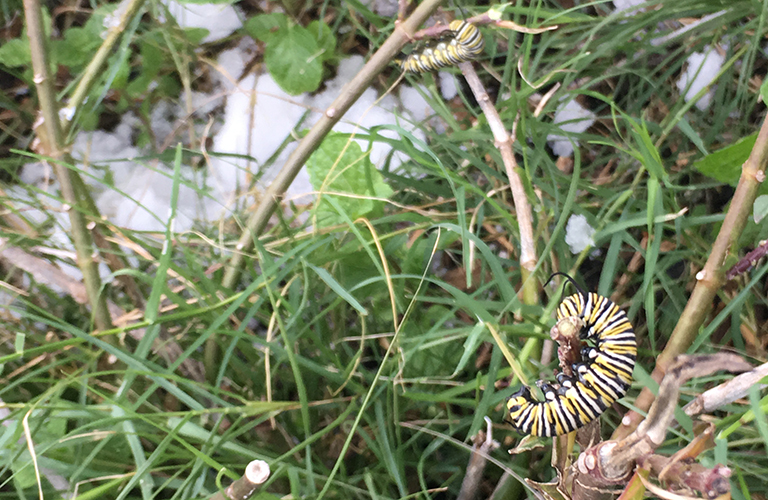Biology Professors Coauthor Study on Monarch Migration
March 25, 2019 — A major paper on monarch butterfly migration coauthored by Professors Leslie Ries and Naresh Neupane of the Department of Biology was published this week in PNAS.
Ries and Neupane collaborated with lead author Sarah Saunders and Elise Zipkin of Michigan State University, M. Isabel Ramirez of Universidad Nacional Autonoma de Mexico, Eligio Garcia-Serrano of the Monarch Fund, and Eduardo Rendon-Salinas of World Wildlife Fund Mexico on “Multi-scale seasonal factors drive the size of winter monarch colonies.”
The paper addresses in a question at the heart of monarch butterfly population patterns. Why do populations continue to decline even as winter habitats and host plants — thought to drive most population decline — are restored?
Ries and her colleagues developed a model that factors in the state of monarch habitats during the autumn migration period, which had not previously been studied as a driver of population decline.
“There has been speculation over the past several years that monarch declines might be driven by dynamics during autumn migration, but this is very difficult to study,” Ries said.
Using landscape greenness as a proxy for nectar availability in the autumn, they discovered that conditions in the monarchs’ autumn habitat of the southern United States are one useful predictor of winter population sizes in Mexico. Greener autumns, along with large populations in summer grounds along the eastern seaboard, lead to larger winter populations. However, they also found that continued degradation of the forests in the overwinter sanctuaries were related to observed declines.
This helps explain why the monarch butterfly’s population in the winter in Mexico has continued to decline. Overall, the population has declined by 84 percent since its 1996 peak, even as losses to the host milkweed plant population has leveled off since the mid-2000s.
The National Science Foundation-funded paper was unique in its interdisciplinary nature and reliance on a number of different data-collecting techniques. The paper relied on data from citizen scientists, climatologists, and contributors from five different institutions to develop the model.
“Tracking dynamics during each phase of the monarch migration wouldn’t be possible without the efforts of multiple groups, and especially those of the thousands of citizen scientists out there recording their observations. Large-scale science like this is impossible without them.” Ries said.
